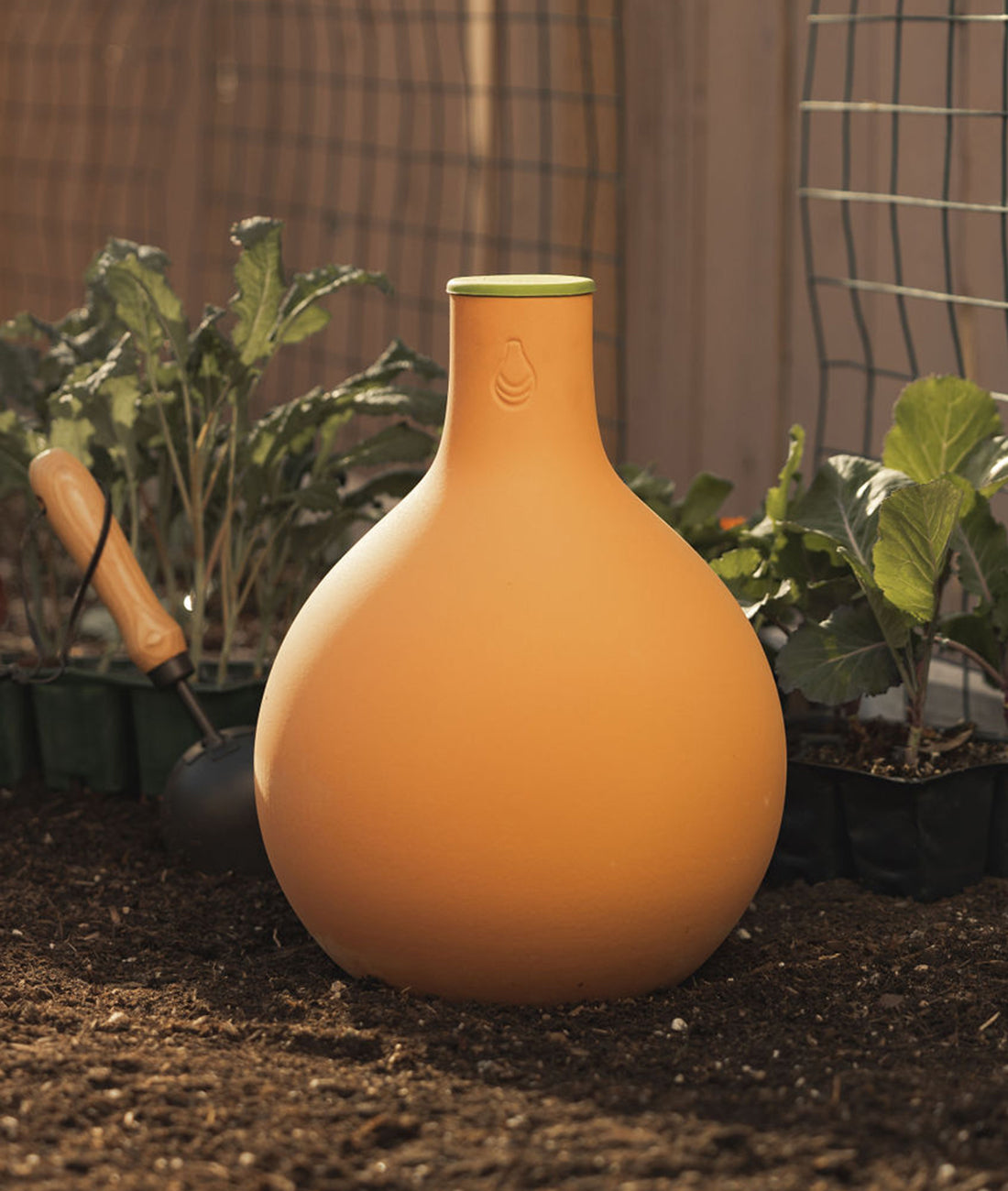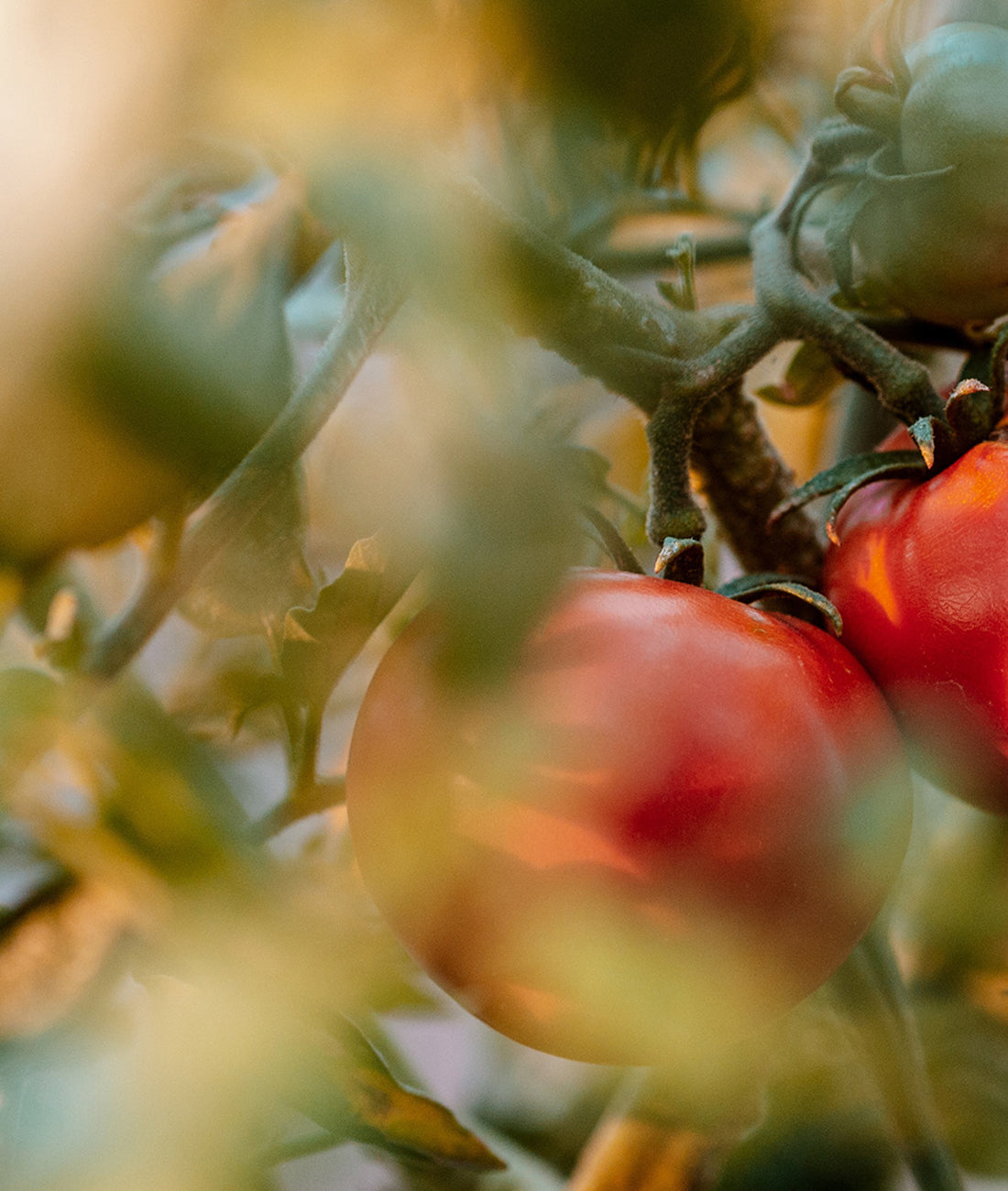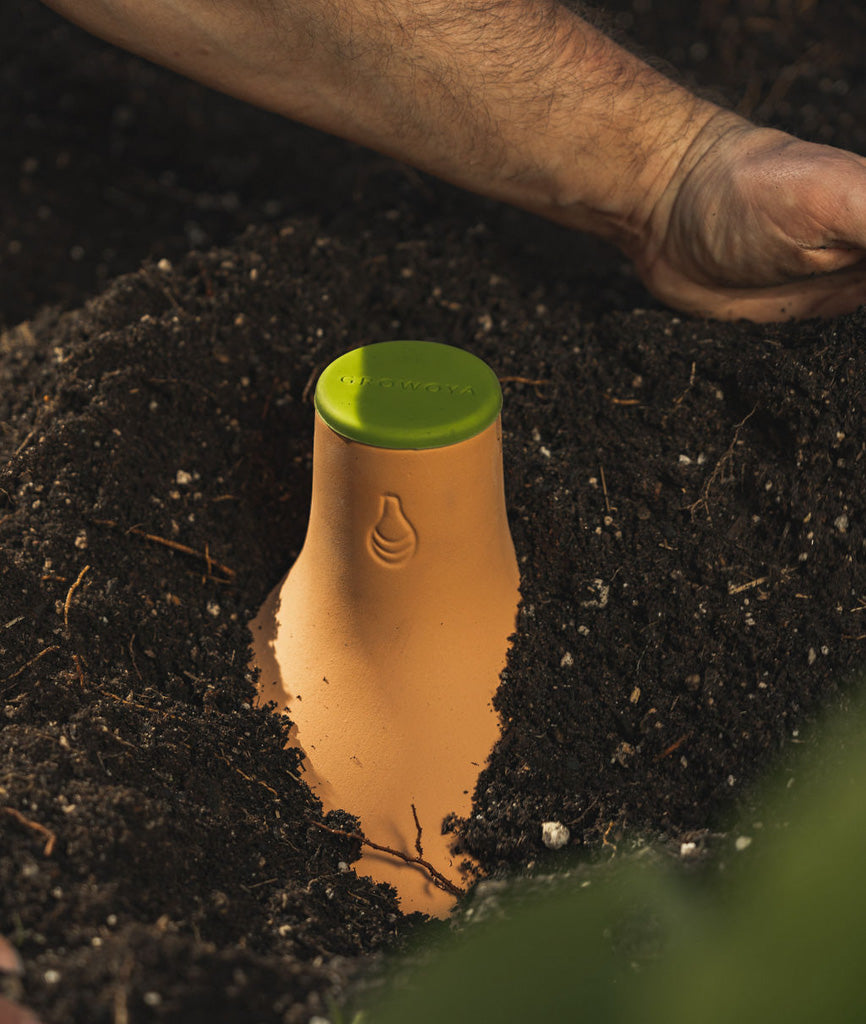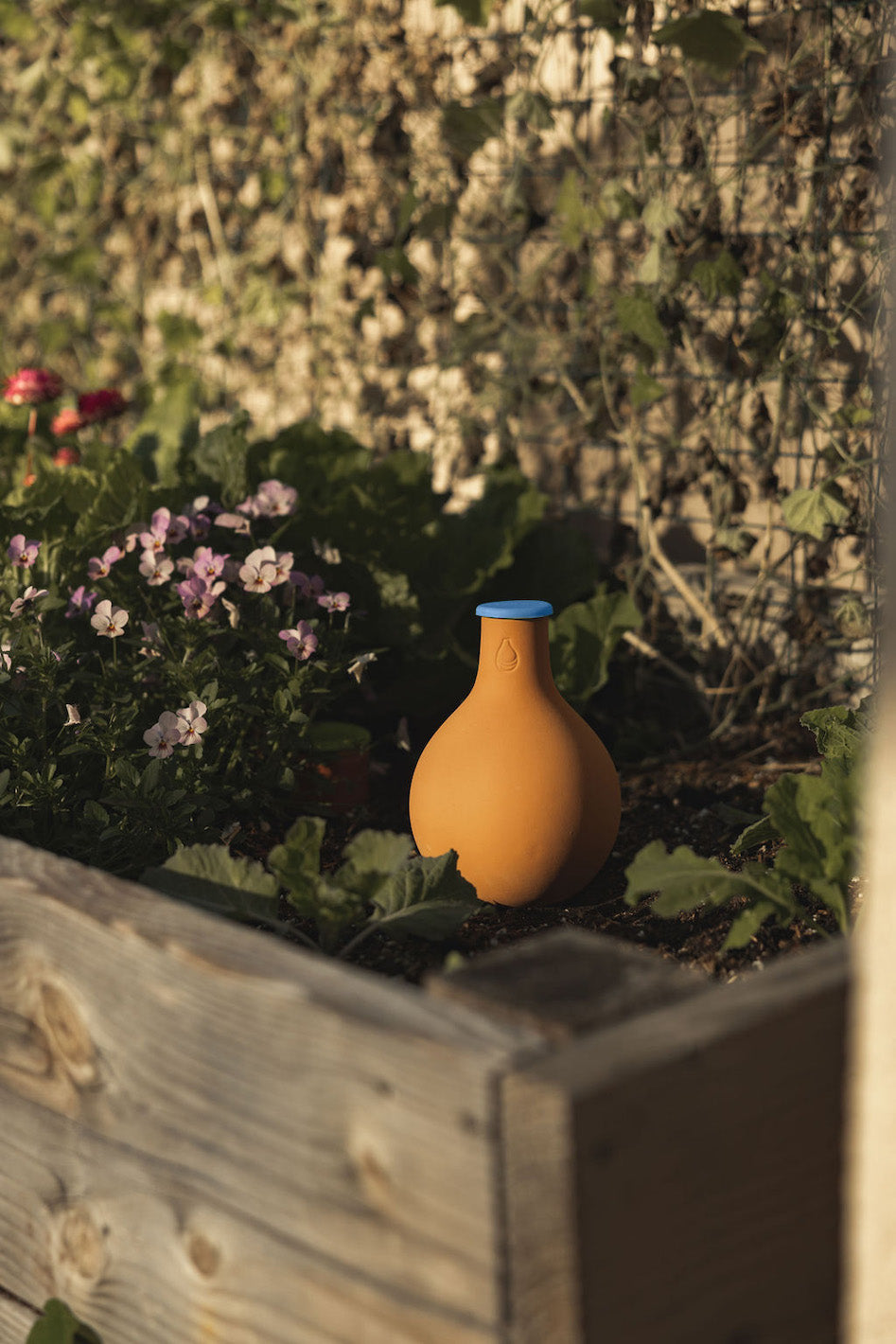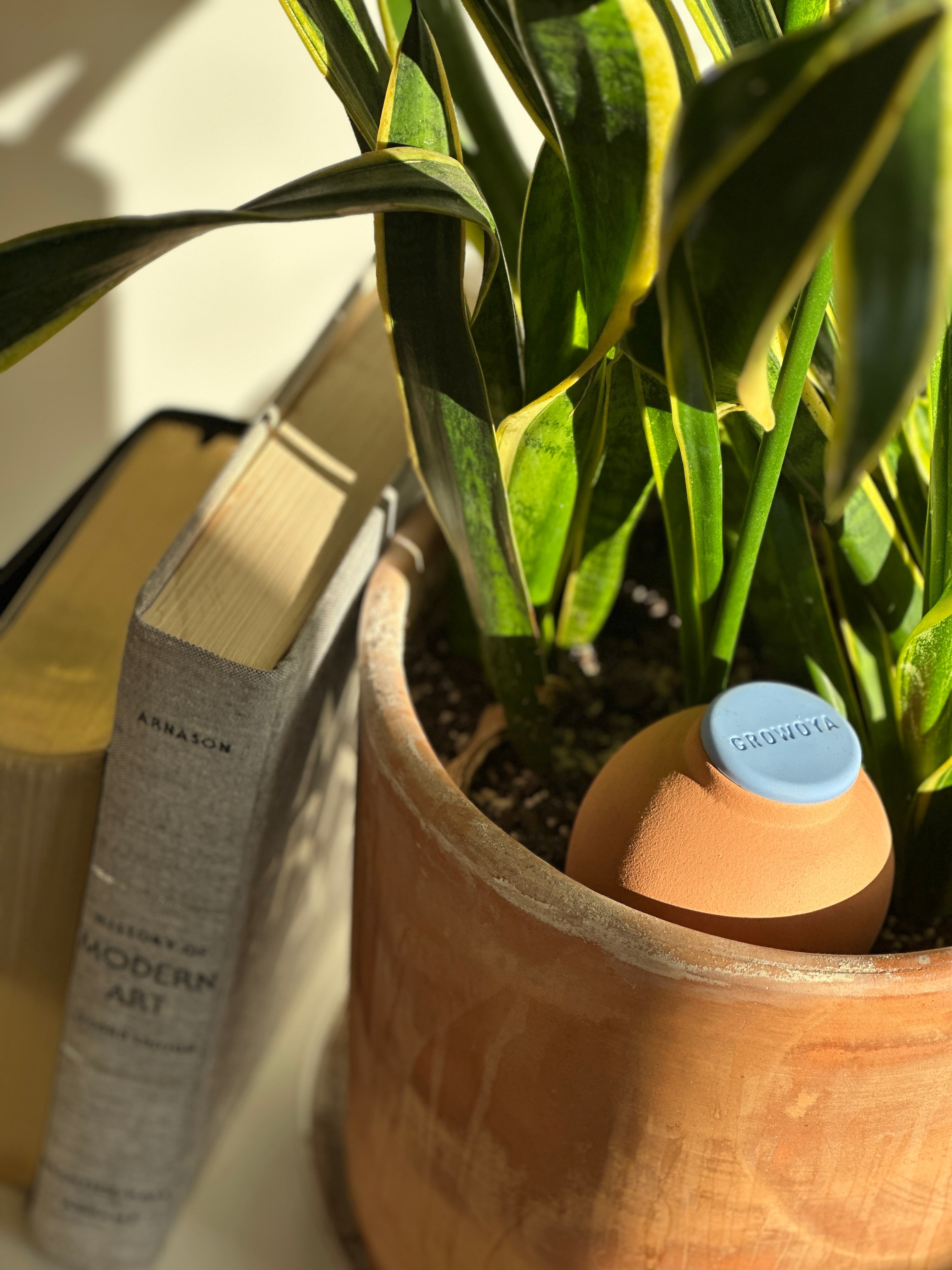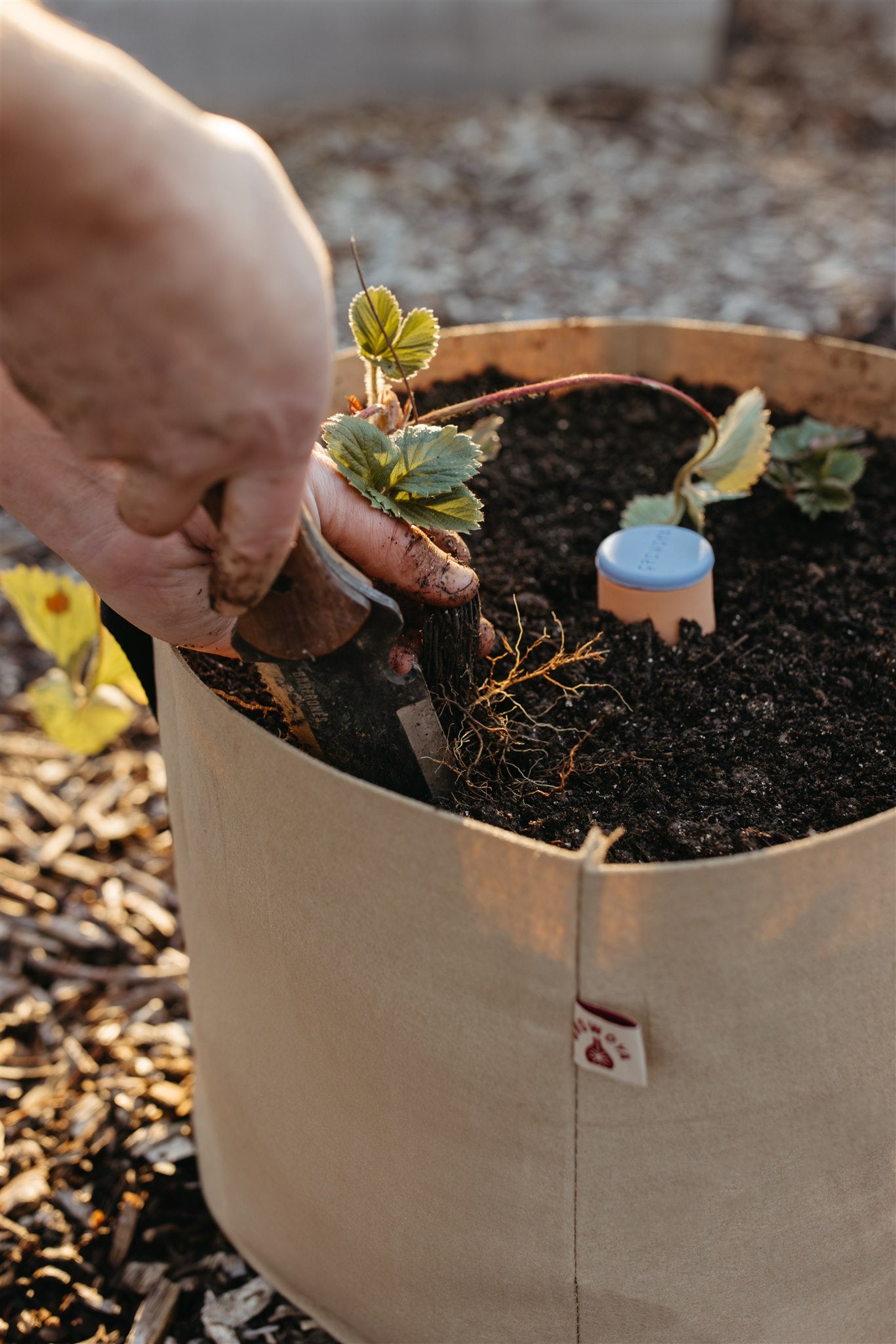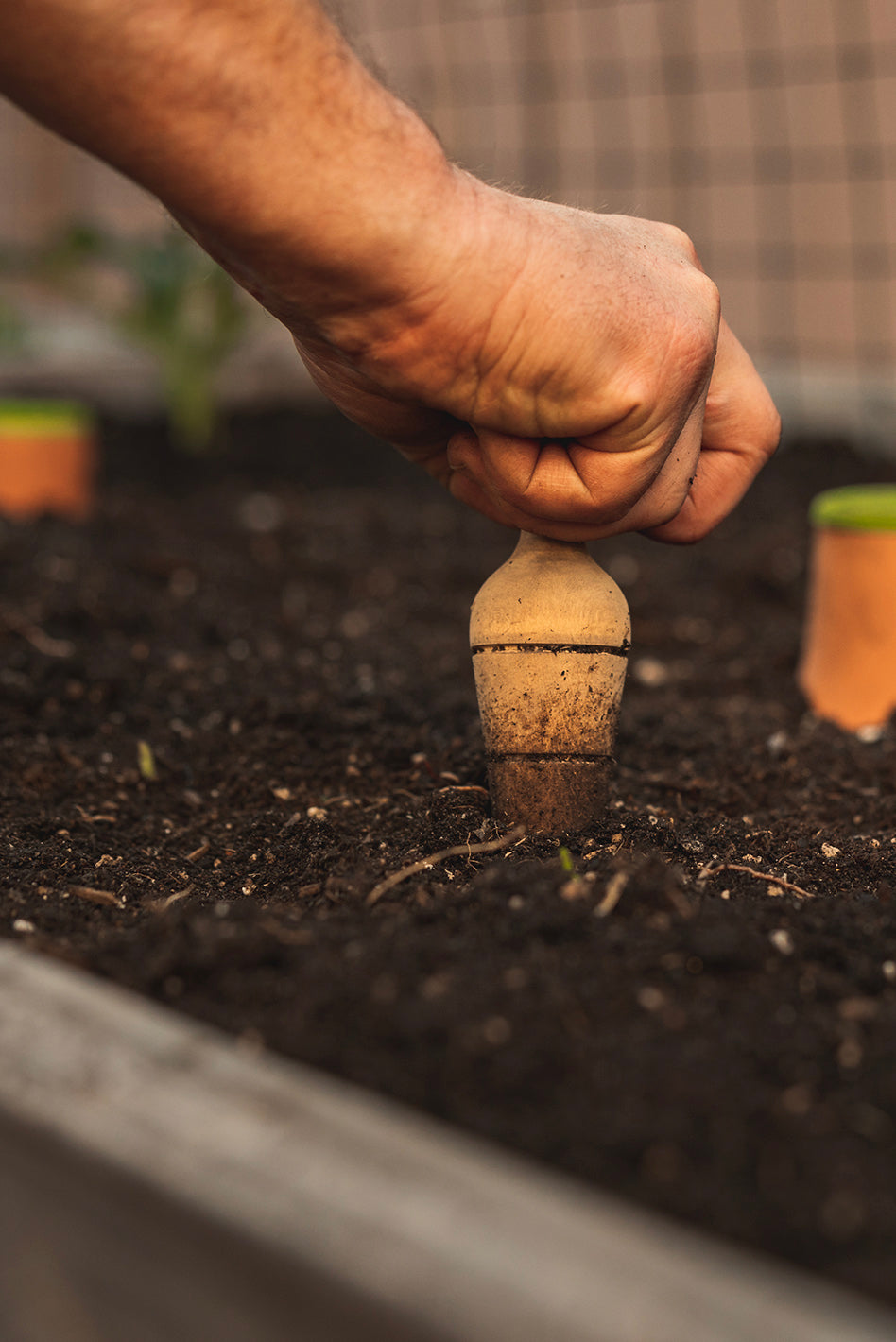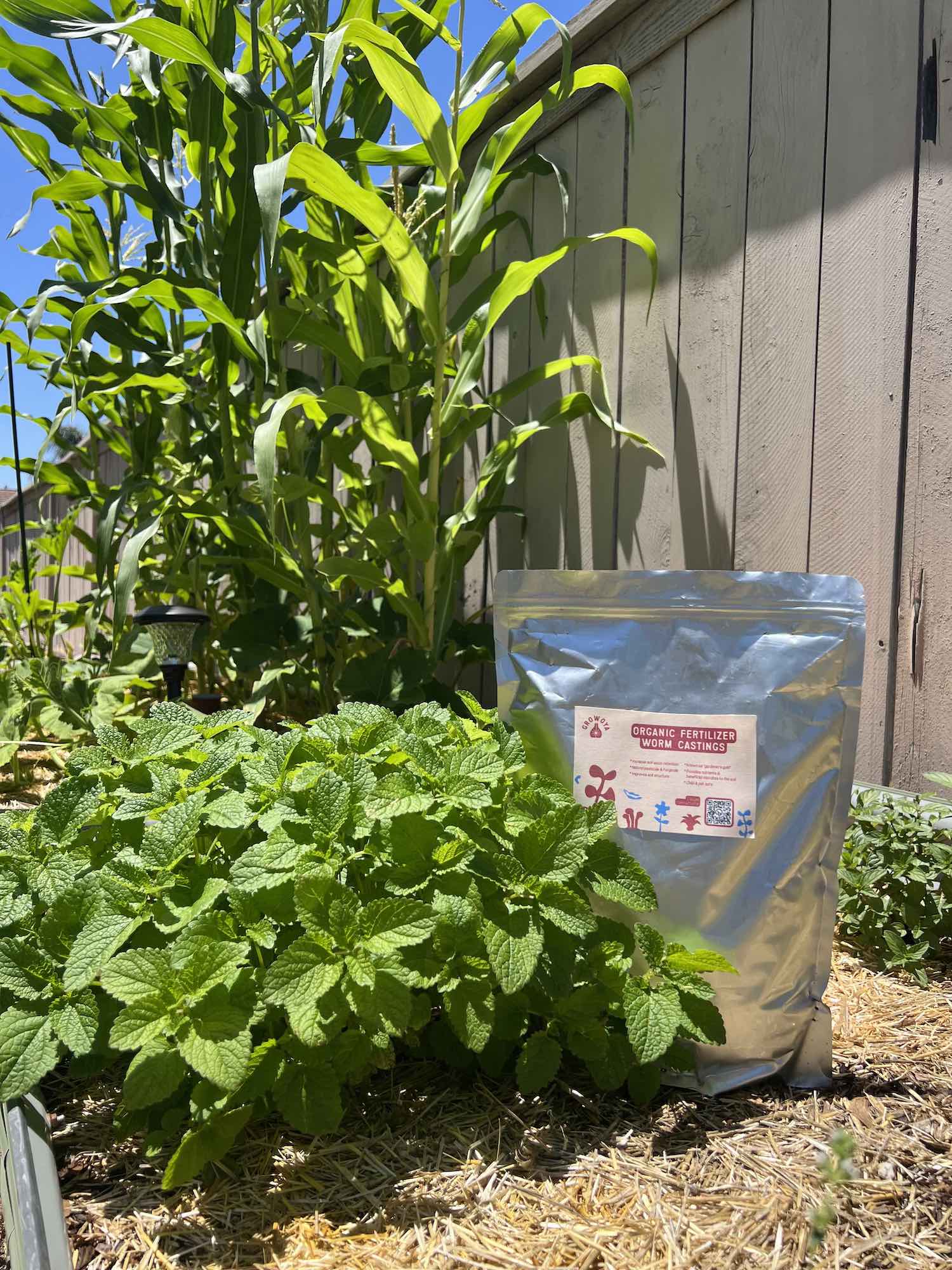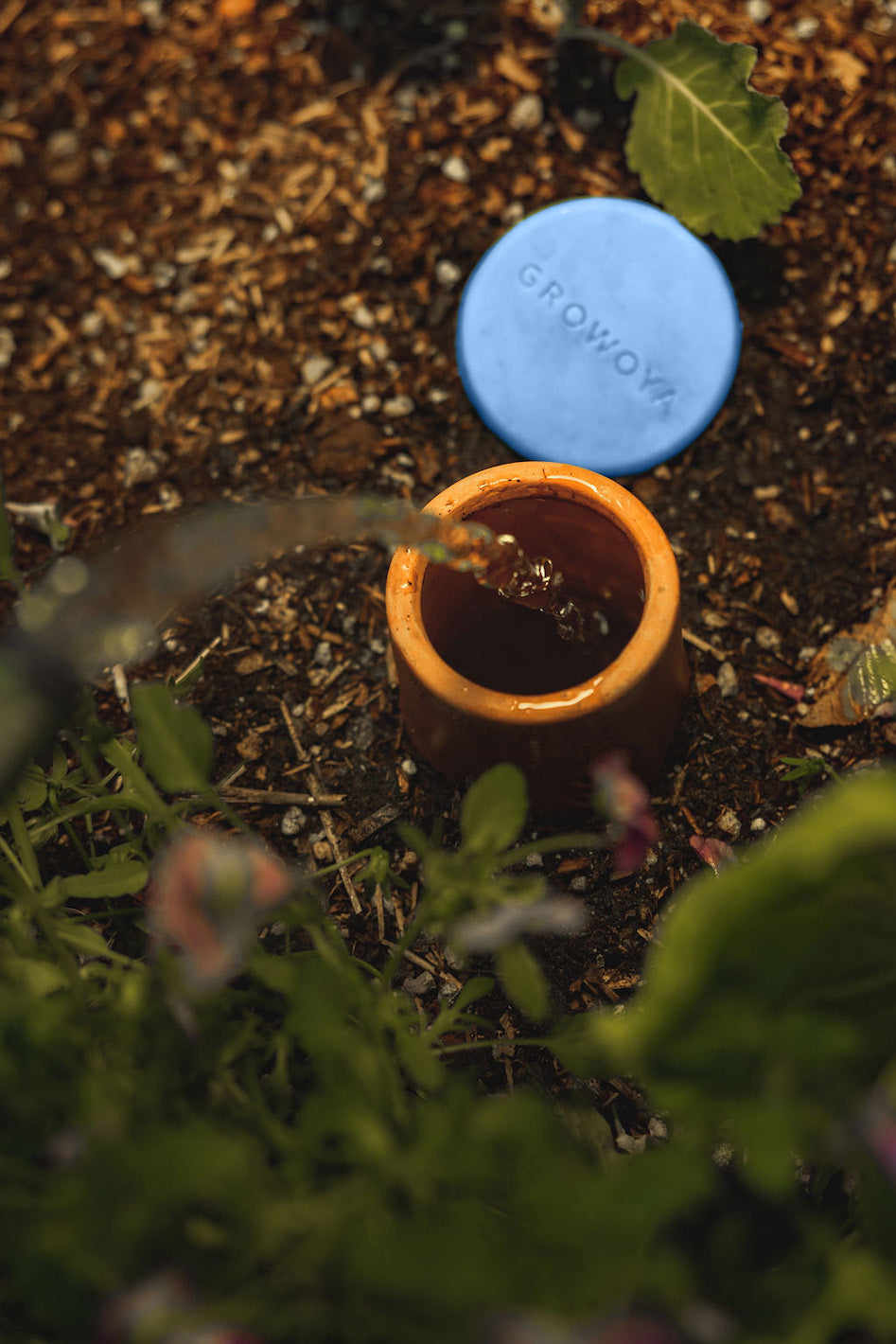Learning how to train your plant on a trellis is crucial if you want to start growing squash and save ground space. Supporting the squash's weight as they ripen helps them from being harmed and decaying on the ground. Trellising squash plants also helps to prevent them from becoming overcrowded and in competition with one another for resources like water and sunlight. In this blog article, we'll go through the fundamentals of training a trellis for your squash plants to promote healthy growth and abundant harvests.
101 Training Trellis
Start by selecting the proper kind of trellis for your squash plants. Choose one that is strong enough to support the weight of the squash and any other plants that may be close within your vegetable garden. Use a trellis that is well anchored in the ground if utilizing a metal or wooden one.
Once your trellis is securely in place, it's time to begin training the plants. With a flexible tie, such as twine or soft wire, delicately attach individual squash vines to the trellis. Try to spread out the ties and support as many stems as you can to ensure that all of your squash receives adequate light and ventilation.
Carefully trim some of the squash vines' ends as they develop. The plants can then concentrate their energy on growing fruits rather than leaves and stem as a result. Clip any dead or diseased vines away from your healthy plants as soon as you see them.
Make Space for Multiple Trellises
If you have the space, it's usually a good idea to build numerous tiers with varied heights when building a training trellis for your squash. This will prevent overcrowding by offering the plants more space to expand and spread out their vines. To avoid cross-pollination, if you're growing more than one variety of squash, make sure to keep them separated on distinct trellises.
Finally, remember to check on your squash plants every few weeks and tighten the ties as needed. This will ensure strong vines and plentiful harvests of mouthwatering squash as they continue to grow.
How Does a Squash Climb a Trellis?
Several natural adaptations in squash plants allow them to climb trellises. The vines first develop tiny tendrils that provide the plant the ability to cling to and wrap around objects like a trellis. Along their stems, they have microscopic roots that serve as an additional anchor and source of support as they develop higher.
Additionally, staggered internodes are a special type of stem growth found in squash plants. Each node (or place where leaves shoot out) on the vine is farther apart from the one before it. This enables the plant to grow taller as it encircles supporting elements like trellises to access greater sources of light and ventilation.
Learning how squash vines interact with trellises may help you better manage and train your plants to promote healthy growth and abundant harvests. You can quickly start collecting delectable squash with the appropriate information and little perseverance!
Is a Trellis Necessary for My Crops?
When growing smaller varieties of squash, like zucchini, trellising may not be essential. However, there are other benefits to supporting your plants and enabling them to grow to their greatest capacity. Trellising facilitates fruit gathering since the fruits are raised off the ground, lowering the possibility of rot or animal/insect damage. Using a trellis could also help you to make better use of any limited planting space.
How to Build a Trellis: Needed Materials
There are a few different materials you may use to build your own trellis. Mesh netting can be used to make more complex designs like arches or circles, while metal or wooden poles are wonderful for offering support and sturdiness. You may also utilize PVC pipes and cable ties as a lighter, do-it-yourself solution that's simple to install and adjust as necessary. Pro Tip: remember to grab a bolt cutter if using chicken wire and ties.
Recommended Materials
- 1-2 feet of chicken wire or mesh for a cage
- Twine, 1-foot long
- Bolt cutters
- Metal or Wooden Stakes
Wooden Stakes Trellis
You may also support your squash plants with a wooden trellis for a more natural appearance. Look for strong wood that is 6 feet long and at least 2 inches thick. Either purchase pre-made trellises from your neighborhood garden shop or construct your own design using posts and cross beams. In any case, before putting the wood in the ground, ensure sure it has been treated to prevent rot and insect damage.
Metal Stake Trellis
Another excellent choice for growing squash is metal trellises. Galvanized steel or aluminum metal posts that won't corrode over time are available for purchase or construction. Make sure to use mesh netting rather than cable ties since the mesh will provide your plants additional stability and support.
Vegetation Density and Trellis
Depending on the size of the squash, squash vines can reach lengths of 10 to 20 feet. They are often considerably thicker and more durable than other types of vines and have a tendency to be much broader. Squash leaves, when spread out, can occupy a significant amount of space, and their stems can be up to an inch in diameter. Squash vines are large enough that a trellis serving as support can be advantageous for them.
The weight of the squash fruits, which can range from one to five pounds, should be taken into account working with larger vines on a trellis. For further stability, make sure your trellis is firmly fixed into the ground or wall and is strong enough to support these larger fruits. Frequently inspect and fix any connections that could be sagging or slipping so that the vines can develop unhindered.
Grow All Squash types
Don't be scared to try out various squash varieties! There are many different types you may cultivate. It's possible that various types of squash require somewhat different trellising techniques, so do further research on the particular needs of your selected plants before beginning. The care they need on the trellis may vary significantly depending on the size and vine tenacity of each squash.
Types of Squash Plants
- Acorn Squash
- Butternut Squash
- Spaghetti Squash
- Delicata Squash
- Zucchini
- Yellow Crookneck Squash
- Sweet Dumpling Squash
- Pumpkin
- Kabocha Squash
- Banana squash
Trellising Summer Squash Plants
Zucchini, yellow crookneck, and delicata squashes are examples of well-known summer squash varieties. These varieties often don't need trellising and typically yield smaller fruits than other varieties of squash. Trellising, however, can be useful for these crops if you have a small garden or wish to keep the fruits off the ground for easy harvest. To adequately bind the vines on the trellis and allow any stems to pass through them, use wide ties, such as strips of cloth or old t-shirts.
Trellising Winter Squash Plants
The variety of squash known as winter squash is normally harvested in its namesake season. These varieties may produce pretty large fruits, and they are considerably more sensitive than summer squash. Because of this, it's critical to offer support to maintain proper growth and protection for the fruits throughout their harvest. The majority of winter squashes need a strong trellis with wide ties so they may pass through freely and aren't caught or damaged when attached to the structure. Additionally, it's important to constantly inspect and fix any ties that could be drooping or slipping. This prevents the vines from suffering harm from added weight or strain.
Other Plants That Utilize Trellis
Many gardens would benefit from trellises as they are useful for growing more than just squash. Other plants like beans, tomatoes, and cucumbers also profit from additional support as they grow higher. When trained up a trellis or along fence lines, climbing roses and trumpet vines have a beautiful appearance. Even annual flowers like nasturtiums love having a sturdy surface to climb on!
Consider adding a trellis or two to your garden, regardless of the structure of the plants you are growing, to give them the extra height and support they require to flourish. You can build a long-lasting, stylish, and practical trellis with the correct supplies and building techniques.
Trellis: Do They Affect Watering?
Yes, trellising may impact how often your squash gets watered. You must be particularly careful while watering and ensure that your crops receive adequate moisture. To minimize the possibility of rot or animal/pest damage while trellising your crop, try to keep the vines as high above the ground as you can. When the vines are close to the ground, it can be difficult for water to reach your plants’ roots. Our Oya watering container is a fantastic answer to this. Simply install an Oya in your garden and fill it with water to completely hydrate your soil from the ground up. And, depending on the climate, it only has to be refilled about once a week!
Why An Oya Is Great For Your Squash
Squash, as part of the Cucurbitaceae family, loves the sun and heat. Warm-to-hot climates are ideal conditions for this plant to yield a good harvest. Unlike other hot weathered plants, squash hates to be over-watered and requires good oxygen circulation. If the roots or leaves are too wet, the squash can develop rot, fungus, or mildew problems. With our Oyas ensuring the soil is optimally watered from below and trellises keeping your squash vertical, you will have the best setup.
Get Trellis and Start Growing Squashes
Trellising squash is a terrific method to maximize your garden space while giving larger, heavier fruits the additional support and security they require. You'll have everything you need to start trellising your squashes if you do some study on the particular needs of each variety you plan to cultivate. Remember that watering is a crucial part of maintaining the health of your crops. If you have problems getting to all parts of your crop, consider utilizing an Oya water pot. With this simple advice, you could soon enjoy the benefits of successfully growing tasty, nutritious squash!

